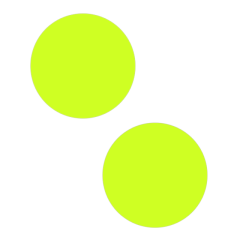
So I had to give up using letterpress and experimented with food-ink printing with my own handcrafted Softcut carving blocks.
In the first iteration of the experiment, I chose several different food inks, including Coffee, Red wine, Ketchup, Egg yolk, Cream, Nutella (chocolate), Drinks (Coke, Juice)
Since the printing ink of choice is food, it is expected that the effect may iterate over time, producing physical or biological changes, such as drying out or mold. However, due to the small amount of ink required for the printing experiments, the food ink dried quickly and did not show mildew.






There are many interesting and unexpected results in the printing experiment.
First of all, there is randomness in food ink printing, and the printing effect of each printing is different.
Second, after egg yolks are printed as ink, the ink dries and takes on a glossy finish over time, similar to the UV printing process.
Third, increasing the amount of food ink creates a special build-up texture. For example: Ketchup will have a vein texture, Cream will have a letterpress effect, Coffee and Red wine will have a watercolor effect.
Of course, there are some uncontrollable problems. For example, when printing, I need to control the amount of ink used. If there is too much ink, the printed content may overflow the edge of the text.
Moreover, some drinks cannot be printed as ink, such as Coke and juice, perhaps because the color is too light to render on paper.
Through the printing experiment of food ink, I found that food ink will present more special textures and effects, which can be used as an additional printing process for artistic creation. However, this printing method is quite challenging, and the amount of ink is difficult to control, so this tool requires trial and error on the amount of ink used.


I also try to print ketchup as ink on a variety of different materials and mediums, simulating the common and uncommon printing processes in life. Although the printing process is more complicated, food ink does have the function of printing.

All in all, food ink printing is a tool that may be difficult to apply to general printing jobs, but can be used as an innovative form of printing.
Tutorial Feedback:
What’s working:
· Tried different types of food inks that worked
· Do a lot of iterative experimental research on food ink printing to analyze the unique effects of different foods
· The iterative process not only included various food inks, but also experimented with different effects of food on various printed materials
· Using food as a printing ink produces interesting effects
What’s no working:
· Limited to printing with the same logo pattern, you can choose patterns or content that are more related to food inks for printing experiments
· The way of iterative experiment is still relatively limited, you can try to explore a wider range and method related to the printing effect of food ink
· I missed two tutorials due to illness, so I missed a lot of opportunities to get feedback during the iteration process, so no further iterative experiments were produced in the printing iteration.
To development further/in future projects:
· If you combine food ink with more professional printing processes such as letterpress, screen printing, printmaking, etc., there may be more possibilities
· Need to continue to think and complete the next iteration of the way, thinking about the relationship and impact of the selected tools on graphic design
· It is possible to combine traditional printing methods with 3D or digital media to express the presentation effect or other unique features of food inks, and carry out the next iterative experiment.
·Try to combine the printing effect of food ink with food branding, and do some final work in brand direction
